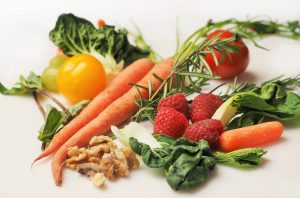
The health benefits of Phytochemicals
Ever since the mankind discovered powerful healing properties of plants the benefits of phytochemicals have been explored. The phytochemicals may help reduce the risk of chronic diseases such as cancer, heart disease, diabetes, Alzheimer’s disease, cataracts of the eye or the functional deterioration due to age.
The phytochemicals are essential compounds which occur naturally in plants. Their nutritional benefits lie in the fact that they can help reduce the risk of many chronic diseases. So far we have identified about 5,000 phytochemical compounds, but researchers estimate that there are hundreds more to be discovered. The benefits of Phytochemicals if taken in a form of food could heal and rejuvenate the organism. The main role of Phytochemicals is to protect the plant itself from various risks such as germs or weeds.
Despite all this, these substances are not considered basic nutrients or substances necessary to sustain life. So while a complete lack of iron or vitamin C is a condition incompatible with life, the lack of lutein or allyl sulphides are not lethal.
Fruits and vegetables contain varying amounts of phytochemical compounds that seem to work and cooperate with each other in this unique way only when they are in the unique chemical structure of each food and not isolated in the form of dietary supplements. The isolated phytochemical compounds either do not contain the optimum ratio to obtain all the benefits of phytochemicals.
But it is not only fruits and vegetables that contain such substances. Phytochemical compounds are found in whole grains, garlic, onion, soy, green and even black tea and coffee. The main classes of phytochemicals substances can be summarised in the following groups:
Carotenoids
The beta-carotene is their main representative. This powerful compound has the ability to stabilise the harmful free radicals and prevents the destroying of our cells and tissues. To this category, we can include alpha-carotene, lutein (beneficial for the good health of the eyes), zeaxanthin (also beneficial for the good health of the eyes) and lycopene (anti-cancerous effect).
Flavonoids with strong antioxidant
This category includes substances such as flavonols, flavones e.g. resveratrol and quercetin identified in red wine, blueberries, red grapes, grapefruit, onions, apples and black tea. At the same time, this beneficial phytochemical is found in smaller amounts in leafy green vegetables and beans. Other forms of flavonoids are the catechins found in tea with the main representative’s gallate and epigallocatechin as well as anthocyanidins from cranberries.
Phenolic acids
These acids are found in the form of gallnut acid, ferulic acid, caffeic acid, curcumin etc. These compounds have similar effects like the flavonoids and they are found in the coffee beans, apples, grapes, oranges, strawberries etc.
Phytoestrogens
Phytoestrogen-rich foods such as soy, tofu, whole grains exhibit cardioprotective and anticancer activities. They are especially beneficial for the breast cancer and prostate cancer patients.
Sulphate compounds
These extremely beneficial phytochemical compounds such as indoles, isothiocyanates and any like sulphur compound are found in garlic, onions and broccoli. Research has detected additional actions of these compounds such as: reducing inflammation in conditions such as arthritis, cardiovascular and Alzheimer’s disease, enhancing the activity of specific enzymes that detoxify the body from carcinogens, slowing the growth of cancer cells and driving the cancer cells to apoptosis (cell death). They are reducing lipid levels, blood pressure and blood clots voltage levels.
The beneficial effects of phytochemical compounds have been supported by data from large epidemiological studies. It has been proven that phytochemicals reduce the risk for a chronic disease. The benefits of macronutrients (carbohydrates, proteins, lipids) and micronutrients (vitamins, minerals, trace elements) is possible only due to phytochemicals which serve as agents and which have to be digested together with other compounds.
Precisely because the research in this field is in its infancy, it would be good that the consumer tries to recruit a variety of phytochemical compounds through the various foods. It’s important to always stay in the context of a healthy and balanced Mediterranean diet.
How do phytochemicals work?
There are several phytochemicals and each of them works differently. Some of the possible effects are:
Antioxidants
Most phytochemicals have antioxidant action, protecting human cells from oxidative damage and reduce the risk of certain chronic diseases such as heart disease, stroke, Alzheimer’s disease, rheumatoid arthritis, cataracts, and various types of cancer. Antioxidants have the ability to completely rid the human body of free radicals. However, they are slowing down or minimising the damage by neutralising free radicals. Phytochemicals with antioxidant activity are sulphides (grapes, onions, garlic), carotenoids (tomatoes, apricots, peppers, carrots), flavonoids (onions, berries, broccoli, apples, strawberries, cereals, red wine, green and black tea, chocolate), polyphenols (tea, grapes).
Hormonal actions
Isoflavones, which are found in soybeans are mimicking human oestrogen and can help to reduce the symptoms of the menopause and osteoporosis.
Stimulation of enzymes
Indoles, which are found in broccoli, cabbage and cauliflower, stimulate enzymes that make oestrogen less effective and could reduce the risk for breast cancer. Other phytochemicals, which interfere with the enzymes are protease inhibitors (soy beans) and terpenes (citrus and cherries).
Interference with DNA replication
The saponins found in most vegetables, beans, herbs, peas, soybeans, interfere with replication of the cell DNA, thus preventing the proliferation of tumour cells. Capsaicin, the active substance of red chilli pepper, protects DNA from carcinogens.
Anti-bacterial action
The phytochemical allicin, found in garlic, has antibacterial properties.
Physical action
Some phytochemicals bound in the cell walls thereby preventing the adhesion of pathogens to human cell walls. The cranberry contains phytochemicals such as anthocyanins, catechins, triterpenoids, which prevent the adhesion of bacteria to membranes. This property explains why cranberry is used to prevent urinary tract infections, stomach ulcers and improve dental health.
What is the recommended intake of phytochemicals?
Due to the lack of sufficient data and the need for better understanding of the absorption and metabolism of phytochemicals, there is not a proposed daily dosage. Today, many health organisations such as American Cancer Society and American Heart Association recommend a daily consumption of large quantities of fruit and vegetables to ensure sufficient quantities of phytochemicals in everyday diet. With Fruits and vegetables, accompanied by herbs and teas you can be sure that you will take enough of Beneficial Phytochemicals.
When you attend our Bootcamp holiday in Chiang Mai Thailand, you will have a lot of opportunities to practice and find out more about the benefits of Phytochemical. You will be able to learn more about healing properties of plant-based foods and natural way of living. Because we are connected with the environment, the Bootcamp holiday in Chiang Mai Thailand will give you an opportunity to become an expert in Phytochemicals and Phytonutrients.
References
http://www.fruitsandveggiesmorematters.org/what-are-phytochemicals
http://www.webmd.com/diet/guide/phytonutrients-faq
http://www.webmd.com/food-recipes/features/10-super-foods#1
http://www.medicinenet.com/script/main/art.asp?articlekey=9475




